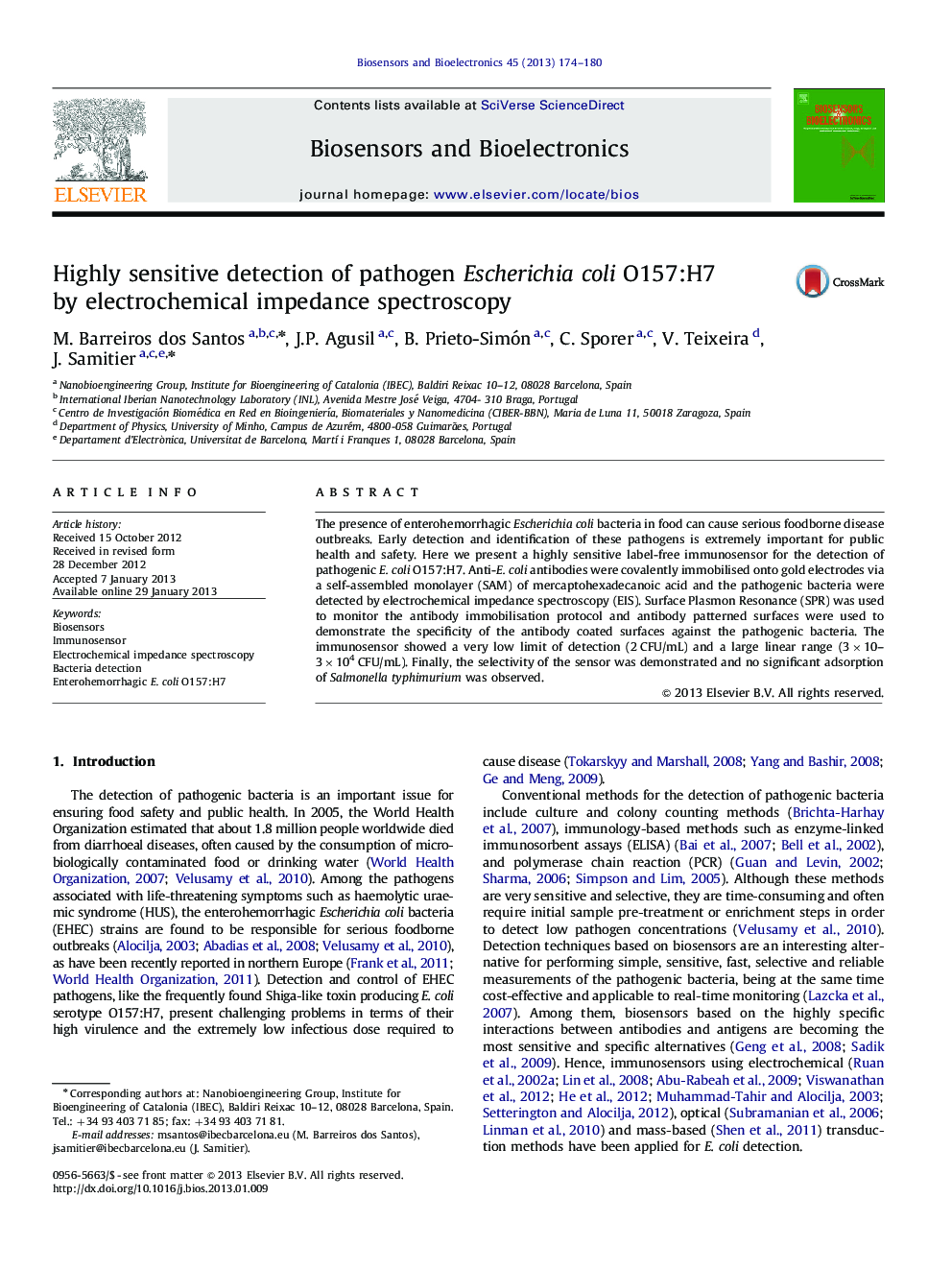| Article ID | Journal | Published Year | Pages | File Type |
|---|---|---|---|---|
| 867042 | Biosensors and Bioelectronics | 2013 | 7 Pages |
The presence of enterohemorrhagic Escherichia coli bacteria in food can cause serious foodborne disease outbreaks. Early detection and identification of these pathogens is extremely important for public health and safety. Here we present a highly sensitive label-free immunosensor for the detection of pathogenic E. coli O157:H7. Anti-E. coli antibodies were covalently immobilised onto gold electrodes via a self-assembled monolayer (SAM) of mercaptohexadecanoic acid and the pathogenic bacteria were detected by electrochemical impedance spectroscopy (EIS). Surface Plasmon Resonance (SPR) was used to monitor the antibody immobilisation protocol and antibody patterned surfaces were used to demonstrate the specificity of the antibody coated surfaces against the pathogenic bacteria. The immunosensor showed a very low limit of detection (2 CFU/mL) and a large linear range (3×10–3×104 CFU/mL). Finally, the selectivity of the sensor was demonstrated and no significant adsorption of Salmonella typhimurium was observed.
► Highly sensitive bacteria sensor. ► Detection of pathogen E. coli O157:H7. ► Electrochemical impedance spectroscopy biosensor. ► Very low limit of detection and large linear detection range.
